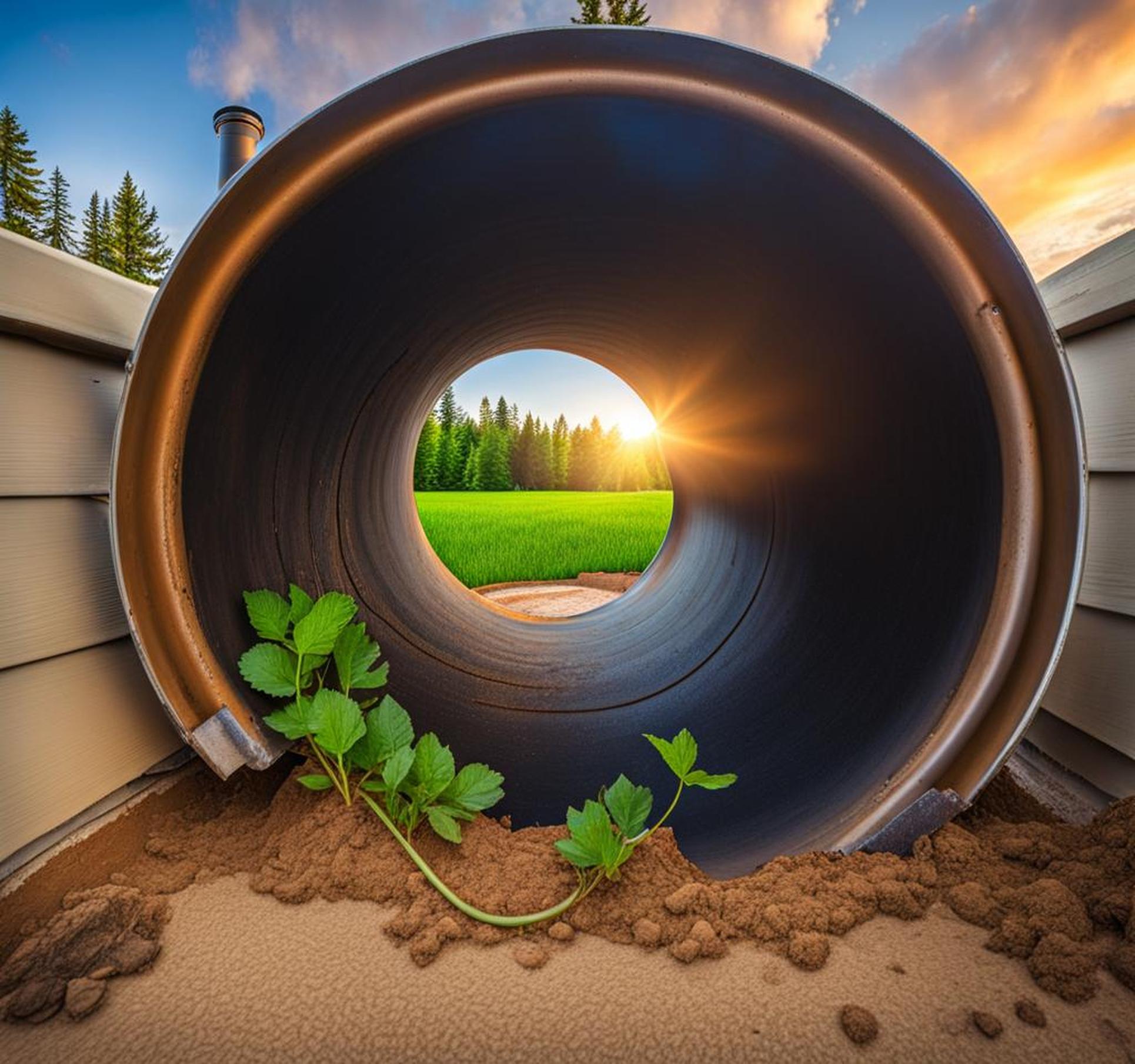Septic systems provide a convenient and environmentally friendly way to treat household wastewater in rural areas not connected to main sewer lines. The system uses a septic tank and drainfield to naturally filter out solids and impurities before the clarified effluent is safely discharged into the soil.
Like any system, septic tanks and drain pipes can become clogged over time from excess solids, roots, or grease and debris. A clogged septic drain leads to backups, overflows, and expensive repairs if left unchecked. Thankfully, many clogs can be cleared with simple DIY methods before calling a professional.
Locating the Septic Tank and Pipes
Before attempting to unclog a drain, it’s crucial to locate the septic tank and connected pipes. Septic tanks are usually buried underground and the access points may be hidden or obscured. Here are some tips for locating your system:
- Check property records, septic permits, or ask previous homeowners where the tank is located.
- Look for lids, manhole covers, or depressions marking access points.
- Use a septic tank locator probe to detect buried tanks.
- Hire a professional inspector if unable to find the tank.
Once the tank is located, inlet and outlet pipes can be uncovered and inspected. The distribution box where effluent enters the drainfield should also be found. Calling a septic professional to help access and locate the system is recommended if you are unable to find it yourself.
Diagnosing a Clogged Septic Drain Pipe
A clogged septic pipe or drainfield will exhibit some clear symptoms that indicate where the blockage is occurring:

- Slow drains – Standing water in sinks/tubs that drains slowly points to a clog in the home’s main sewer line or tank outlet.
- Gurgling sounds – Strange noises from drains and toilets can indicate a partial clog.
- Foul sewage odors – Bad smells coming from drains or around the tank can signal a backed up sewer line.
- Pooling water – Water collecting around the tank or drainfield implies a clogged outlet pipe or soaked drainfield.
Confirming the location of the clog with a sewer camera inspection can help troubleshoot the issue before attempting to unclog.
Natural Drain Cleaners and Uncloggers
Before reaching for harsh chemical drain cleaners, try some natural homemade drain uncloggers:
- Pour 1/2 cup baking soda down the drain, followed by 1/2 cup vinegar – the chemical reaction can break down organic blockages.
- Attach a drain snake to your drill, and dip it in baking soda before inserting into the pipe.
- Boil water and pour it down the drain – hot water can liquefy grease clogs.
Natural methods are ideal for clearing small clogs and keeping septic systems healthy. However, for more significant obstructions, mechanical means may be needed.
Mechanical Means of Unclogging Pipes
For tougher clogs, a mechanical sewer auger is required:
- Feed the rotating auger down the drain line until resistance is felt.
- Turning the auger will break up and extract the blockage.
- Care should be taken not to scratch or damage pipes with the auger.
- Different auger heads can be attached to clear various materials.
Both the main septic pipe from the house and the lateral pipes between the tank and drainfield may need to be augered to clear a stubborn clog or one that has progressed downstream.
Unclogging Inlet Pipes and Distribution Boxes
A clogged inlet or outlet pipe causes septic problems that must be addressed:
- Use a plunger over the inlet to try and dislodge any blockages.
- Insert a hose or drainage snake into the inlet pipe from above.
- Remove the distribution box lid and use a scoop or wet/dry vac to clear out any sludge.
If snaking the pipes or cleaning the distribution box does not work, the pipes may need to be excavated and repaired or replaced.
Removing Difficult Clogs and Obstructions
For challenging clogs that resist augering, a few other methods can be attempted before calling an expensive plumber:
- Rent a motorized drain auger with more torque capable of cutting through roots.
- Hire a company to hydro jet high pressure water through the pipes.
- Excavate and inspect pipes – collapsed or broken pipes may need repair.
- Remove roots or rocks manually from pipes if accessible.
However, cave-ins, long obstructions, and pipes deeper than 3 feet will require a professional with special equipment.
Preventing Future Septic Drain Clogs
Prevention is the best medicine when it comes to septic drain clogs:
- Avoid putting grease, solids, and harsh chemicals down drains.
- Use a bacteria additive weekly to break down waste.
- Inspect pipes annually for root intrusion or damage.
- Pump septic tank regularly every 2-3 years.
Neglecting septic tank maintenance leads to clogs and backups. Stay on top of servicing and care to keep your septic drains free-flowing.
While many clogged drains can be DIY, some situations require a professional:
- If DIY methods fail to open the drain.
- Accessing and repairing below-ground tanks or buried pipes.
- Installing new septic pipes or components.
- Diagnosing and fixing issues like a collapsed drainfield.
Don’t hesitate to call a septic specialist for assistance if you are unable to unclog the drain on your own – waiting often makes the problem worse. With some persistence and the right approach, clogged septic drains can usually be cleared without requiring expensive replacements.
